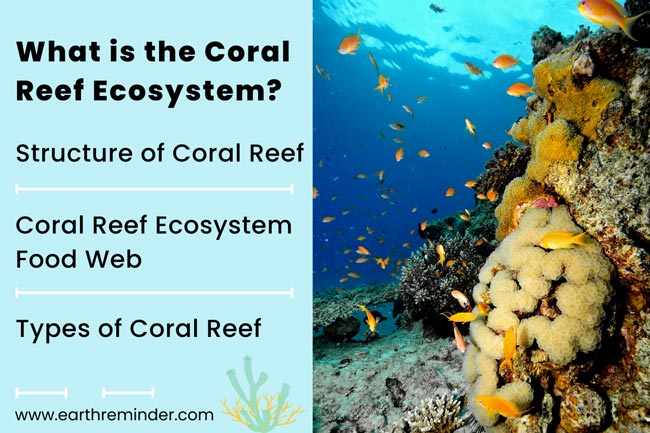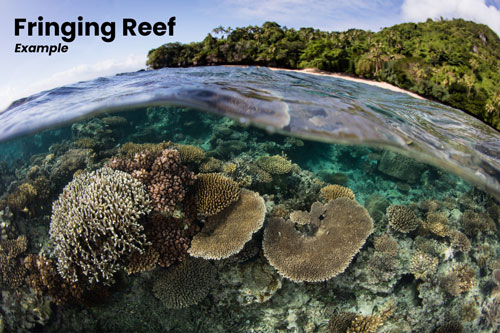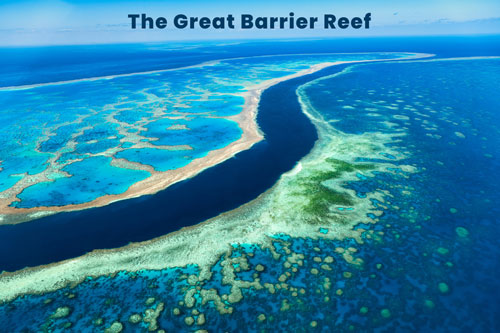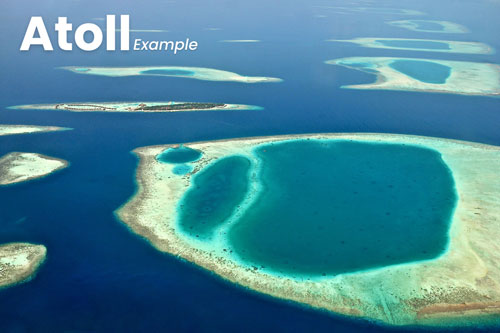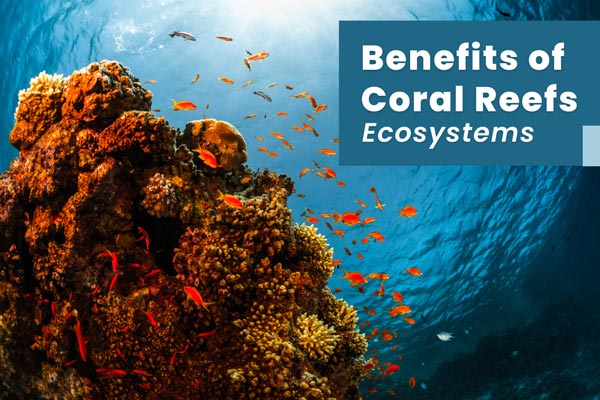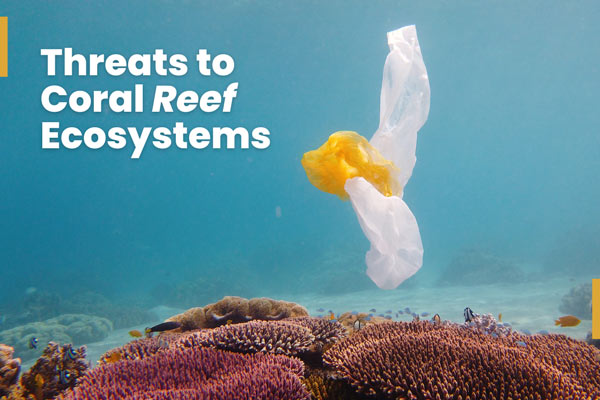Coral Reef Ecosystem: Structure, Food Web, and Types
Coral Reef Ecosystem Meaning:
Coral reef ecosystems are dense populations of organisms that are often known as the “rainforest of the sea.” And these aren’t trees. These are made up of tiny animals called coral polyps.
Besides the identified 2,000 species of corals, several other organisms live together to make the reef a dense oceanic ecosystem. It’s also a habitat for 4,000 species of fish and over 1 million species of other animals such as sponges, algae, plants, etc.
However, some human interventions are causing massive damage to this beautiful ecosystem. Thus, knowing about them—before they will ultimately vanish—is quite urgent for this generation.
In this article, we will describe the coral reef ecosystem comprehensively. And you are going to feel thrilled to go for a sea dive to experience them. Let’s delve right in!
Table of Contents
What is the Coral Reef Ecosystem?
Before learning about the coral reef ecosystem, we need to understand what coral is.
Corals
Corals are a colony of tubular-shaped animals called coral polyps with a central mouth surrounded by tentacles.
Some people are confused if corals are colorful rocks or plants inside the water. However, they are animals and can’t produce their food independently.
We will dive a bit deeper into their biology,
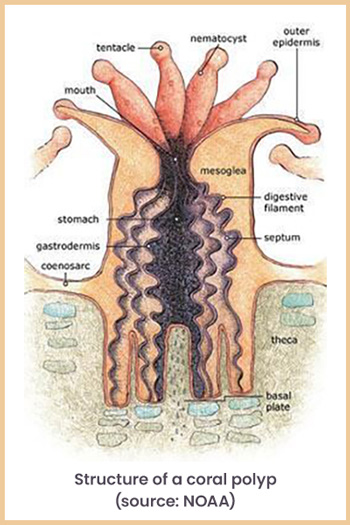
- Corals are the invertebrate organisms that belong to the phylum Cnidaria. More specifically, they belong to the class Anthozoa.
- The tentacles of coral polyps contain a particular type of cell – stinging cells – known as nematocyst. With the help of these, these individual collects their food from the surrounding, adheres to it, and defends against the odds. Further, polyps hunt for some foods such as plankton, small fish, and other food matters.
- Coral polyps show both sexual and asexual types of reproduction. The most famous asexual type is budding, through which they form a large colony of corals.
- However, when they perform sexual reproduction, the gametes from both the sex mixes in either outside water or inside the female body and form a zygote called planula.
- Moreover, polyps are sessile while planula is motile and swim freely in the water until they find a stable place to settle down.
- Also, there are two types of corals like hard corals and soft corals with distinct characteristics.
What Do Corals Eat for Growing?
Shallow water corals have a symbiotic (mutually beneficial) relationship with photosynthetic algae, namely Zooxanthellae. These algae produce food by extracting water and carbon dioxide and supplying the corals.
In exchange, these algae get a protective shelter inside the hard covering of corals. This symbiotic relationship is termed mutualism. About 90% of the food, they collect is through these protists.
However, inside the deep water, there is no sunlight. Thus, the corals inside the deep water don’t rely on microscopic photosynthetic creatures for food.
Instead, they collect their food from the dead sediments. The organisms near the shore, when dead and decay, travel down to the bottom. As that organic material is food for some other creatures inside the ocean, only 10% of food particles cross the light-filled (euphotic) region. From that 10%, only 1% reach the bottom. And from that amount, one-tenth part is buried down the earth.
You can imagine how scarce food conditions the deep-sea corals face to thrive.
What Are Coral Reefs?
Coral reefs are the skeleton-like frameworks that create the habitat for most sea creatures. To understand coral reefs deeply, let’s understand their structure and formation.
Structure of Coral Reef
Coral polyps are the living structures that create calcareous frameworks for their protection. A reef is a non-living structure that acts as the anchor for these tiny invertebrates.
Moreover, these polyps capture calcium from the seawater and secrete calcium carbonate (limestone) to create the skeletal structure – the reef.
Over millions of years of deposition over the dead structures, these become massive that we admire to see in real life.
Thus, corals are the biotic component that creates the reefs – the corallite skeletons composed of white limestone.
Stony corals primarily take part in building coral reefs. However, some other shareholders include hydrocoralline and alcyonarian.
According to NOAA, the corals inside a coral reef ecosystem grow very slowly, ranging from 0.5 to 2 cm per year. Yet, the growth depends on favorable conditions like salinity, temperature, sunlight, and wave action. At an appropriate circumstance, it’s shown to grow up to 4.5 cm per year.
How Do Coral Reefs Get Their Color?
Now you might be wondering, what gives corals such beautiful bright colors if the reefs are white?
Well, the dead corals are all white. However, the presence of photosynthetic algae (primarily green and brown) – which contains chloroplast/chlorophyll – inside the tissues of corals provides color to the structures.
Also, the tentacles of some corals acquire color by the synthesis of several pigments (proteins) inside the body. As some of these are fluorescent, the reflected color differs from the absorbed color of light.
Coral Reef Ecosystem
Coral reefs are ecosystems that are the most lively ecosystem on the earth. We can estimate its expansion to be 0.1% of the entire ocean ecosystem. However, they provide habitat to about one-quarter of organisms.
When corals, along with other sea organisms, start living as a mass, creating an ecosystem, it’s known as the coral reef ecosystem.
Within the reefs, corals, sponges, octopi, snails, clams, squid, fish, worms, eels, sea stars, shrimp, sea urchins, and other microbes like bacteria and protists live together.
Coral reefs, through their exoskeleton, protect these organisms and, in exchange, extract food from the photosynthetic algae living in their tissues.
Coral Reef Ecosystem Food Web
There is competition between all the organisms within the coral reef ecosystem for shelter and food. So, some creatures kill others to gain nutrition and become the primary consumer of the food chain.
A food web forms by combining all the interconnected food chains in an ecosystem. And just as in other ecosystems, there are producers, consumers, and decomposers within the coral reef ecosystem.
The primary producers (or the plants) in a coral reef ecosystem are blue-green algae or cyanobacteria, brown algae, phytoplankton, seagrass, and zooxanthellae. These autotrophs produce food through the photosynthesis process.
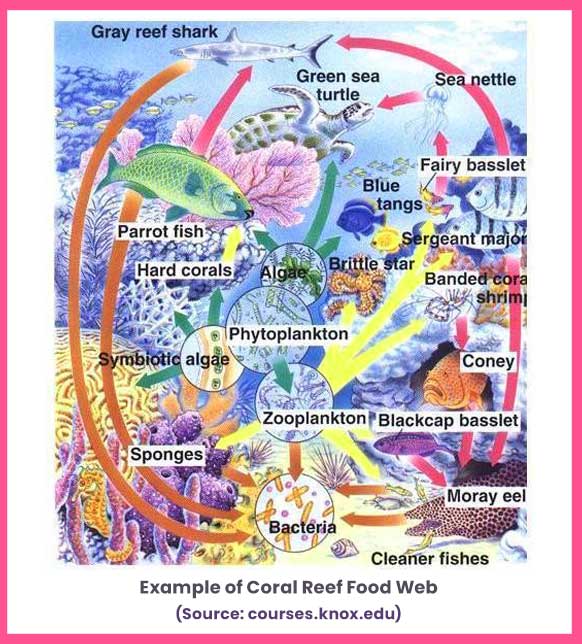
Then the primary consumers or herbivores consume that food to thrive, which are again consumed by the carnivores and omnivores. The process repeats until the top-level consumers.
The major primary consumers of the coral reef ecosystem include corals, zooplankton, queen conch, sponges, and Atlantic blue tang. These predators become prey when some intermediate or secondary consumers are present.
For Examples, flaming tongue snail, sergeant major, bar jack, bicolor damselfish, polychaete worm, Caribbean lobster, grouper, cushion sea star, and southern stingray.
And the final organism or the top predator inside the coral reef food web is the blacktip reef shark.
After the organism’s demise, the decomposers like microorganisms and some of these organisms simplify the complex biological matters and make it available for the autotrophs for food production.
Queen conch and polychaete worm are the primary detritivores or decomposers of this ecosystem.
Types of Coral Reef
There are four different types of coral reefs: Fringing Reef, Barrier Reef, Atoll, and Patch Reefs.
Fringing Reef
The first type of reef is a fringing reef. These coral reefs are mainly present near the seashore around a volcanic island or a part of a continent.
These are the reefs that are most prone to damage due to the activities of local people. Fringing reefs start growing from the landmass (continental land or island). Further, these reefs grow in a shallow water channel with a width of mostly 50 to 100 meters.
Example Of Fringing Reef Coral Ecosystem
Fringing reefs are widely spread all around the world. Some examples of such coral reef ecosystems are San Blas, Panama, Cayman Islands of Caribbean; Sabah, Malaysia of southeast Asia; Ningaloo Reef, Australia and North Madagascar of Indian Ocean; New Caledonia in indo-pacific; and Mangia, cook the island of Pacific.
Another fascinating and extensive fringing reef example is Israel’s Red Sea coral reef.
The Ningaloo Reef of Australia near the Indian Ocean is the largest fringing reef in the world.
Barrier Reef
Barrier reefs are coral reef ecosystems that remain a few miles away from the seashore. These are likely to fringing reefs except their distance from the landmass.
An 8-16 Km wide water body (20-100 meter deep) remains between the land and the barrier reef. This is known as a lagoon.
Examples of Barrier Reef
The Great Barrier reef along the north-eastern coast of Australia is the most significant barrier reef and the world’s largest reef ecosystem.
Some other examples of barrier reefs are the Belize Barrier Reef, the Meso-American Barrier Reef in the Atlantic Ocean, and the New Caledonian Barrier Reef.
Atoll
An atoll surrounds a lagoon in a horse-shoe or ring-like structure. There is no island in between the lagoon and coral reef. Therefore, atolls are also known as Lagoon Island or coral islands.
Underwater volcanoes – seamounts – are the origin of the development of atolls.
Examples of Atolls
There are a large number of atolls residing in the Lakshadweep Islands. Besides, the atoll of Bikini in the pacific is well-known for the atomic and hydrogen bomb experiments.
Some more examples of atolls are the Fuji and Funafuti Island in the Ellice, and the Tubataha reefs of the Philippines.
Patch Reefs
Some patch-like frameworks are formed sometimes between fringing reefs, barrier reefs, or even atolls that originate from the island platform, often known as patch reefs.
Examples of Patch Reefs
You can visualize some amazing patch reefs in the Great Barrier Reef or South Cuba, New Caledonia, Belize, San Blas, and Palau.
Benefits Of the Coral Reef Ecosystem
Some of the natural benefits of the coral reef ecosystem are;
- They serve as the house for hundreds of marine species
About 25% of total marine diversity depends on coral reefs for spawning, nursery, feeding, and hiding.
- Coral reefs protect natural breakwaters
Some natural phenomena such as cyclones, typhoons, and hurricanes can’t affect this diverse ecosystem only because of the protective shield of reefs.
Economic Importance of Coral Reefs
It is important to note that coral reefs have an economic significance.
- Drug discovery
Several research is going on coral reefs to understand their effectiveness against diseases like Alzheimer’s, arthritis, cancer, infections, heart diseases, etc.
- Food
The local communities near the coastal regions depend on seafood for living. And coral reefs serve as the root to yield about an average of 15 tons per square kilometer of seafood, including fish, annually.
Further, approx. 4.3 billion people all around the earth depend on fish for 15% of the significant source of protein. Thus, when the coral reefs die out of any threats, it becomes a food crisis for the local communities.
- Provides jobs and opportunities for recreation
Coral reefs are an attraction for tourists, and thus, it becomes an opportunity for the locals to earn a living. As per a recent estimation, coral reefs have an economic value of around 2.7 trillion USD per year.
- Protects coastlines from erosion
Also, the corals near the coastline protect the coastal area from erosion by regulating the wave activities during storms.
This is why coral reefs are extensively crucial for the underwater ecosystem and us.
Threats to Coral Reef Ecosystem
We can differentiate the threats to the coral reef ecosystem into local threats (the loss caused by the local communities) and Global threats. However, if we will categorize these based on climatic factors, the types are;
- Natural Threats
Some deterioration to coral reefs occurs naturally through storms, pathogens, and predators.
- Anthropogenic Threats
Some physical damages caused by the locals include;
- Development of the coastal.
- Dredging.
- Boat anchors and groundings.
- Misuse by touching or removing corals.
- Destructive fishing.
Marine pollution is another primary reason for the destruction of coral reefs. Pollution contain pollutants like sediments, nitrogen, and phosphorus nutrients, pathogens that cause fecal contamination, toxic chemicals, and trash materials.
Besides, Over fishing, coral harvesting, and coral mining are some other factors that act as threats to our valuable biological resources.
A huge anthropogenic threat to the coral reef ecosystem is climate change that, along with some other factors, takes part in ocean acidification. This increase in temperature and changes in salinity creates unfavorable conditions for corals. As a result, corals remove their algae and eventually start to die. This event is known as coral bleaching.
Coral Reefs Restoration
We are at the peak of the 21st century, where climate-related issues are at their optimum level. In the context of threats to the coral reef ecosystem, we have studied climate change as a primary factor for coral bleaching that ultimately leads to their death.
Therefore, some leading organizations are performing their best possible efforts to save this precious and extended biodiversity.
Some of the efforts by noaa.gov include,
- Improvement of habitat quality.
- Prevention of the deterioration of the coral habitats.
- Focus on the enhancement of coral population resilience.
- Enhancing coral health and survival.
EPA is also performing its best to work seriously towards protecting these vulnerable living assets. However, it’s not just the duty of our government or any such associations to protect the coral reef ecosystem. It’s our responsibility, too. We can also take part in the conservative efforts by taking minimal steps to reduce the detrimental effects.
